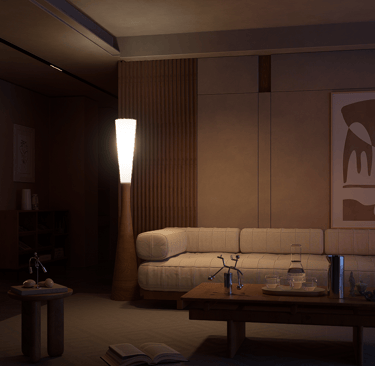Architectural 3D Rendering: Bringing Designs to Life
Architectural 3D rendering is a transformative process that plays a pivotal role in the world of design and construction. In this article, we'll delve into the various facets of architectural rendering, exploring its types, the software tools involved, its benefits, challenges, ongoing trends, and glimpses into the future.
3D RENDERING SERVICES
Talha Rehman
10/20/20234 min read


Definition of Architectural 3D Rendering
Architectural 3D rendering involves creating visual representations of architectural designs. It is a crucial step in conveying the envisioned structures in a way that is easily understandable to various stakeholders.
Importance in Design and Construction
The significance of architectural rendering lies in its ability to bridge the gap between abstract concepts and tangible structures. It serves as a powerful tool in the early stages of design, aiding architects, clients, and builders in visualizing the final product.
Types of Architectural Rendering
Photorealistic 3D Rendering
Photorealistic 3D rendering strives to mimic reality, creating images that are almost indistinguishable from actual photographs. This type of rendering is often used for detailed presentations and marketing materials.
Non-Photorealistic 3D Rendering
Non-photorealistic 3D rendering takes a more artistic approach, emphasizing style over realism. It is commonly employed for conceptual designs and presentations where a more abstract representation is desired.
Virtual Reality Rendering
With the rise of virtual reality technology, architectural rendering has expanded into immersive experiences. Virtual reality rendering allows stakeholders to explore designs in a 3D environment, providing a more interactive and engaging perspective.
Software Tools for Architectural Rendering
AutoCAD
AutoCAD is a versatile design tool widely used in architectural rendering. Its precision and extensive features make it a preferred choice for creating detailed and accurate visualizations.
SketchUp
SketchUp is renowned for its user-friendly interface, making it accessible to both professionals and beginners. It is particularly popular for quick conceptualizations and early-stage renderings.
Blender
Blender, an open-source 3D creation suite, has gained prominence for its powerful rendering capabilities. It is favored by those seeking advanced customization and flexibility in their visualizations.
Lumion
Lumion is a real-time rendering software known for its speed and efficiency. It enables architects to create impressive visualizations swiftly, making it an invaluable tool for project presentations.
Benefits of Architectural 3DRendering
Enhanced 3D Visualization
Architectural rendering provides a clear visual representation, allowing stakeholders to grasp design concepts more comprehensively than traditional 2D drawings.
Client Communication
The ability to showcase realistic renderings facilitates effective communication between architects and clients. It helps in aligning expectations and ensuring client satisfaction.
Design Evaluation
Architectural rendering allows architects to evaluate and refine their designs by observing them from different angles and in various lighting conditions before the construction phase begins.
Marketing and Presentation
High-quality renderings serve as powerful marketing tools, aiding in the promotion of architectural projects. They can be used in presentations, portfolios, and promotional materials to attract clients and investors.
Challenges in Architectural 3D Rendering
Resource Intensiveness
Creating detailed and realistic renderings can be resource-intensive, requiring powerful hardware and software. This poses a challenge for smaller firms with limited resources.
Technical Expertise
Mastering rendering software demands technical expertise, and not all architects or designers may possess the necessary skills. This gap can hinder the adoption of rendering technologies.
Time Constraints
Meeting project deadlines can be challenging when extensive time is required for rendering. Striking a balance between quality and timeliness is a perpetual challenge in the field.
Trends in Architectural 3D Rendering
Real-Time Rendering
Advancements in technology have led to the emergence of real-time rendering, allowing architects to make instant adjustments and observe changes in real-time, enhancing workflow efficiency.
Sustainable Design Rendering
With a growing emphasis on sustainability, architectural rendering is increasingly used to visualize eco-friendly designs and their impact on the environment.
AI-Enhanced 3D Rendering
Artificial intelligence is being incorporated into rendering processes, automating certain tasks and improving the overall speed and quality of visualizations.
Case Studies
Iconic Architectural Projects Utilizing Rendering
Examining successful projects that extensively utilized architectural rendering provides valuable insights into its impact on project success and stakeholder satisfaction.
Impact on Project Success
Analyzing how architectural rendering has contributed to the success of specific projects sheds light on its role in project development and realization.
Tips for Effective Architectural Rendering
Attention to Detail
Detailing is crucial in creating realistic renderings. Paying attention to minute details ensures a higher level of accuracy in visualizations.
Lighting Considerations
Proper lighting enhances the realism of renderings. Understanding lighting effects and shadows contributes to the overall quality of the visual representation.
Material Realism
Rendering materials realistically adds authenticity to designs. Emphasizing the texture and materiality of elements enhances the visual impact.
Context Integration
Integrating the design into its surrounding context provides a more holistic view. Considering the environment adds depth and authenticity to architectural renderings.
Future of Architectural Rendering
Advancements in Technology
Continual advancements in hardware and software are anticipated to further enhance the capabilities of architectural rendering tools, making them more accessible and efficient.
Integration with Augmented Reality
The integration of architectural rendering with augmented reality is poised to revolutionize the way stakeholders interact with designs, allowing for immersive and dynamic experiences.
Accessibility and Affordability
Efforts to make rendering tools more accessible and affordable are underway, opening up opportunities for smaller firms and individual designers to harness the power of rendering technology.
Conclusion
Architectural rendering stands as a cornerstone in the design and construction industry, revolutionizing how projects are conceptualized, communicated, and realized.
As technology continues to evolve, the future of architectural rendering holds exciting possibilities, promising more accessible, efficient, and immersive design experiences.
Frequently Asked Questions (FAQs)
What is the primary purpose of architectural rendering?
Architectural rendering serves to visually represent design concepts, aiding communication between stakeholders and enhancing the overall design process.
Which software is best for beginners in architectural rendering?
SketchUp is often recommended for beginners due to its user-friendly interface and versatility.
How does architectural rendering contribute to sustainable design?
Rendering allows designers to visualize and analyze the environmental impact of designs, promoting sustainable and eco-friendly architectural solutions.
Is real-time rendering essential in the architectural design process?
Real-time rendering is becoming increasingly essential as it provides immediate feedback, streamlining the design workflow and decision-making process.
Are there any upcoming trends in architectural rendering technology?
The integration of artificial intelligence, augmented reality, and advancements in real-time rendering are key trends shaping the future of architectural rendering technology.

